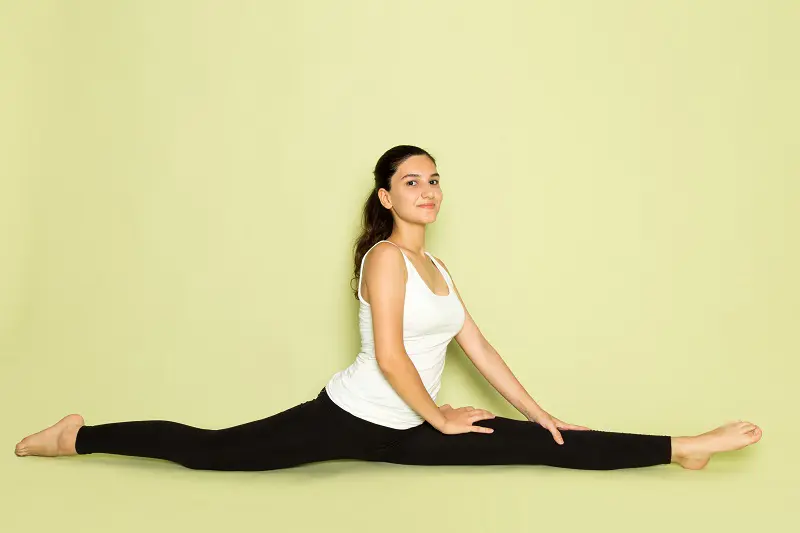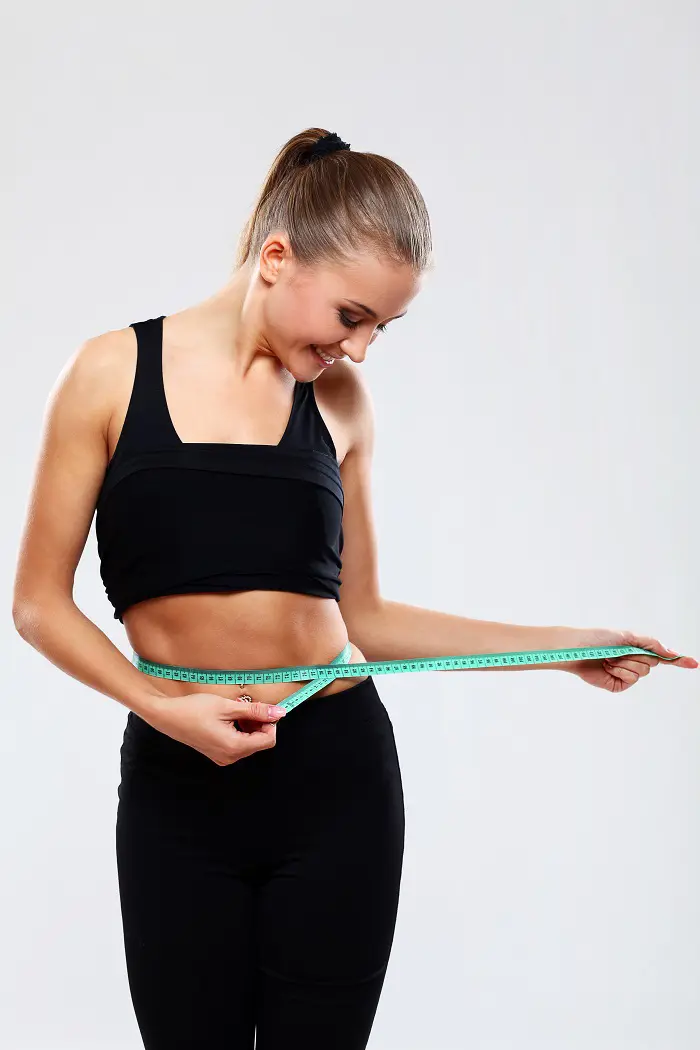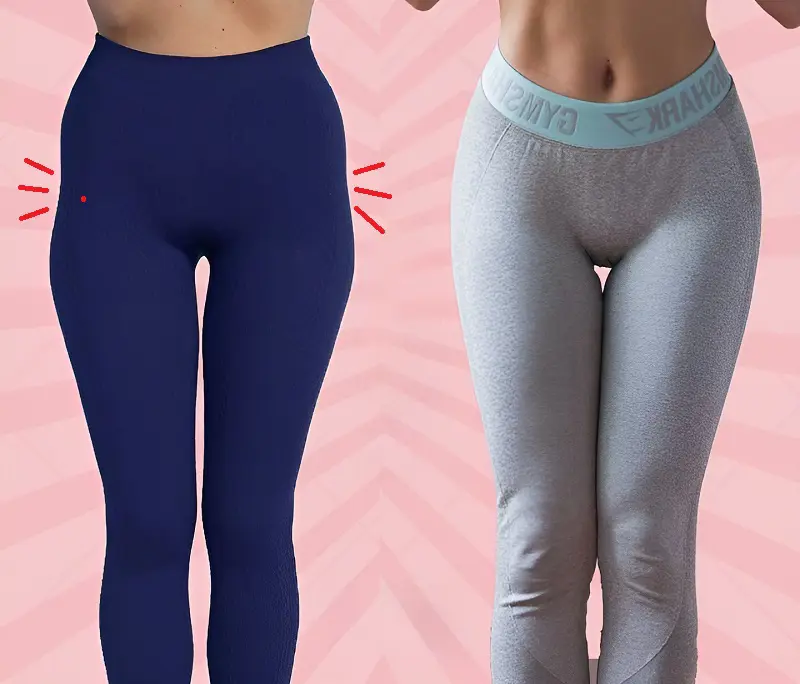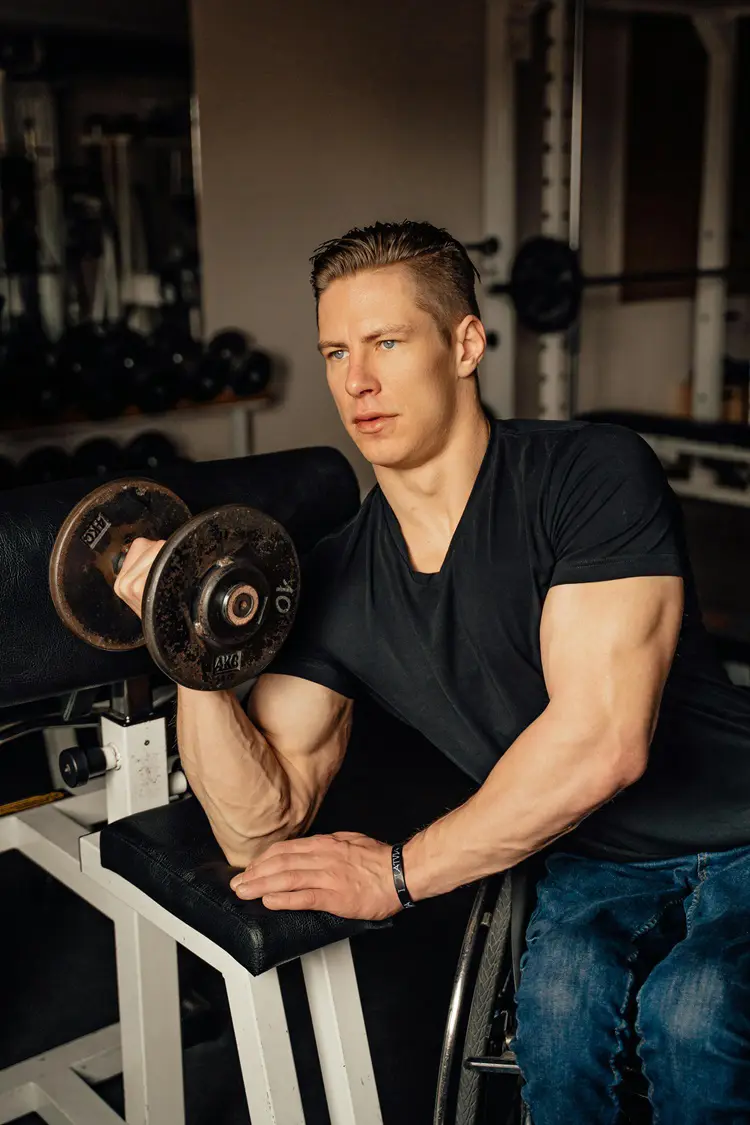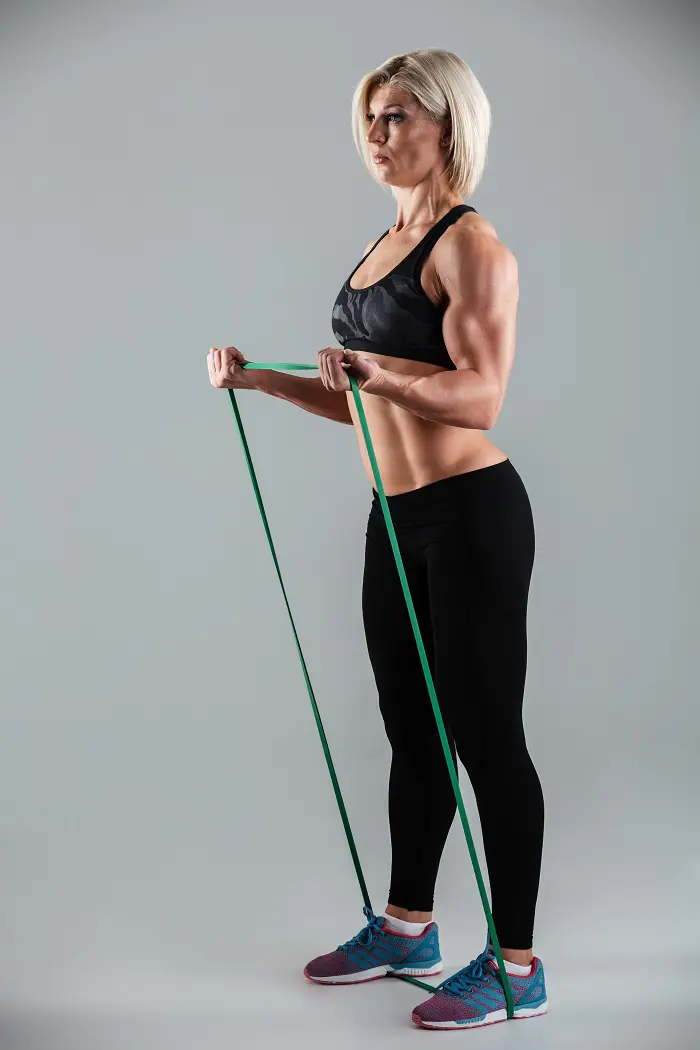How To Stretch Before And After Workout: 12 Stretching Exercises
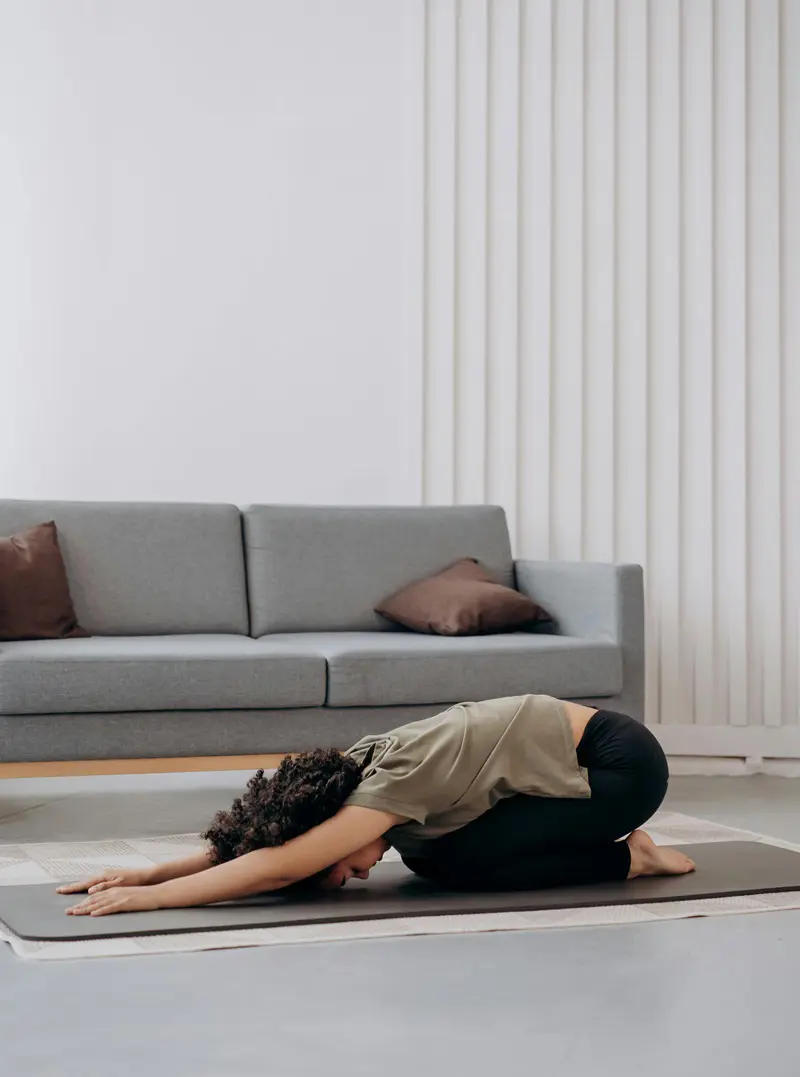
Even though it may seem like a lot of work to do stretching before and after a workout session, it is crucial for your general well-being. Cool down and before workout stretching are intended to loosen the muscles, increase flexibility, and make the workouts more effective.
Stretching post and pre workout is not only made for professional athletes, but it can applied to all fitness enthusiasts. Let us explore 12 of the best stretches that can be done before and after an exercise session.
Pre-Workout Stretching Routine
1. Leg Swings
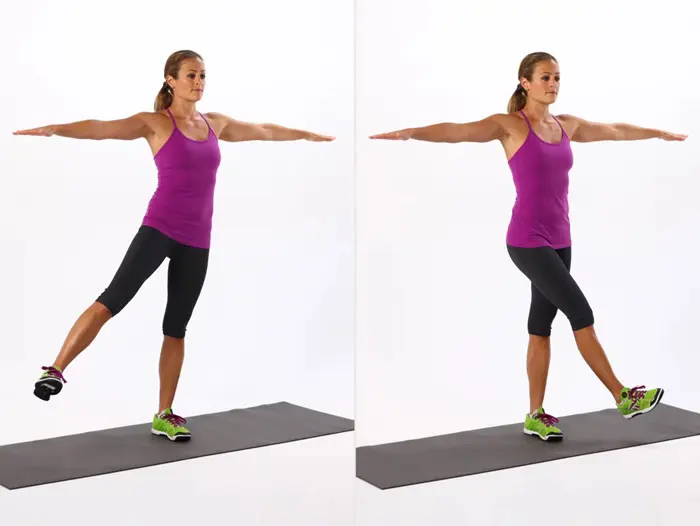
Leg swings are one of the best pre workout stretches, especially, for those who are planning to run or perform squats or other activities involving legs.
This dynamic stretch specifically takes care of your hip flexors and hamstrings while ensuring that all muscles are flexible so that the hips can move to the correct angle. Leg swings increase the blood circulation in your legs, thus promoting flexibility to reduce the chances of leg injuries.
How to Do It:
- Stand next to a wall or hold onto something stable for balance.
- First, practice rhythmic leg movement with one leg extending forward and backward with a controlled motion without compromising the upper body posture and the core muscles.
- Do about 10-15 swings with each leg before gradually progressing to greater arcs of motion as you warm up your muscles.
- To add some intensity, you can perform the leg swing by swinging the leg from side to side. This strengthens the inner as well as the outer hip muscles.
2. Walking Lunges
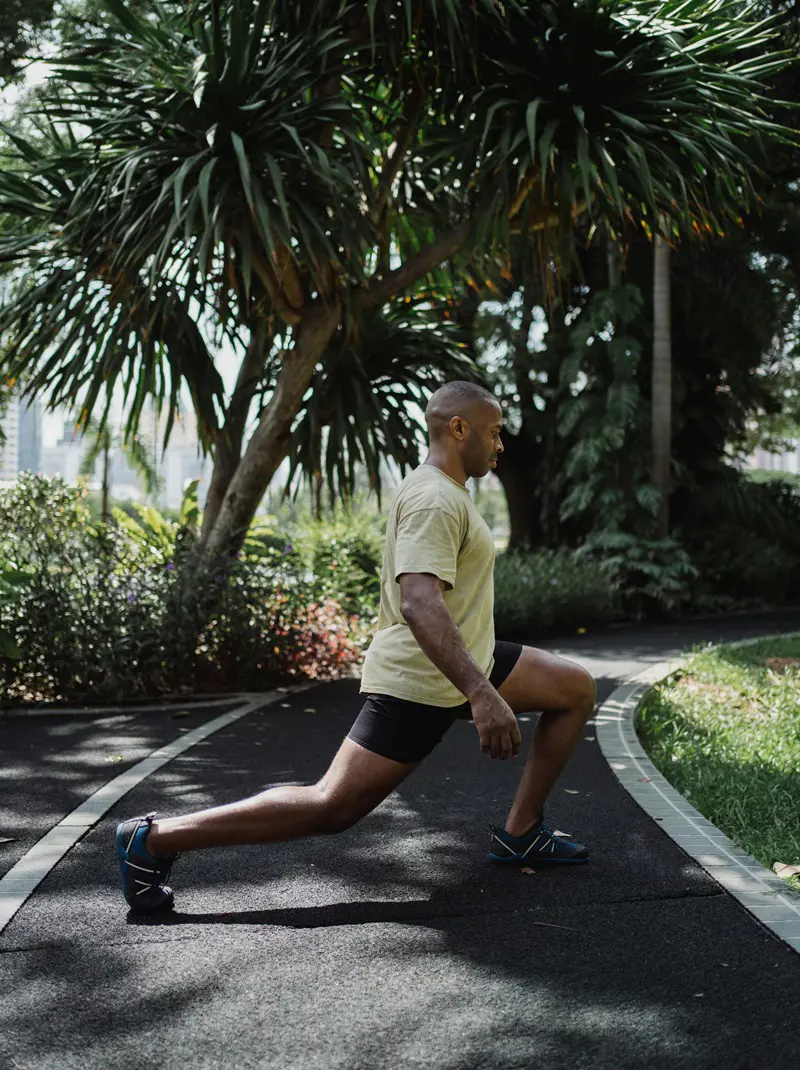
Before the workout, one of the most effective stretch exercises you can do is the walking lunges, especially for the lower part of your body. This dynamic stretch is effective because it mobilizes the hips, quadriceps, hamstrings, and gluteal muscles, making it perfect for any session that needs leg strength or endurance.
Since the muscles are aimed in different directions and increase flexibility, walking lunges allow for avoiding possible injuries and guarantee that your legs will be prepared for all required loads during the training.
How to Do It:
- Stand upright with your feet together, and take a step forward with your right leg.
- Bend the knee into a lunge position, where the right knee is aligned with your ankle and the left must be a little off the ground.
- Swing up from your right heel and step forward as far as you can with your left leg into the next lunge.
- Just as in the backward walk, change legs as you are crossing over, doing 10 to 12 forward lunges on each leg.
- Keep your back straight, core engaged, and movements controlled throughout the exercise.
3. Arm Circles
Arm circles are a simple yet effective stretch that should be included in your pre-workout routine, especially if are going to work your upper body. This stretch is good for warming up your shoulder joints, circulation, and flexibility of your arms and shoulders.
If you perform arm circles as part of the stretches before working out, your shoulders become flexible enough to handle external force quite well.
How to Do It:
- Put the feet parallel to one another and shoulder-width apart, with the arms stretched out parallel to the ground.
- Start using your arms gently and rotate them in one direction, making them move forward.
- Gradually increase the size of the circles, maintaining a controlled and steady pace.
- After this action, continue the circles for another 15-20 seconds and then reverse them, making the circles in the opposite direction.
- Continue for another 15-20 seconds, keeping your core engaged and your movements smooth.
4. High Knees
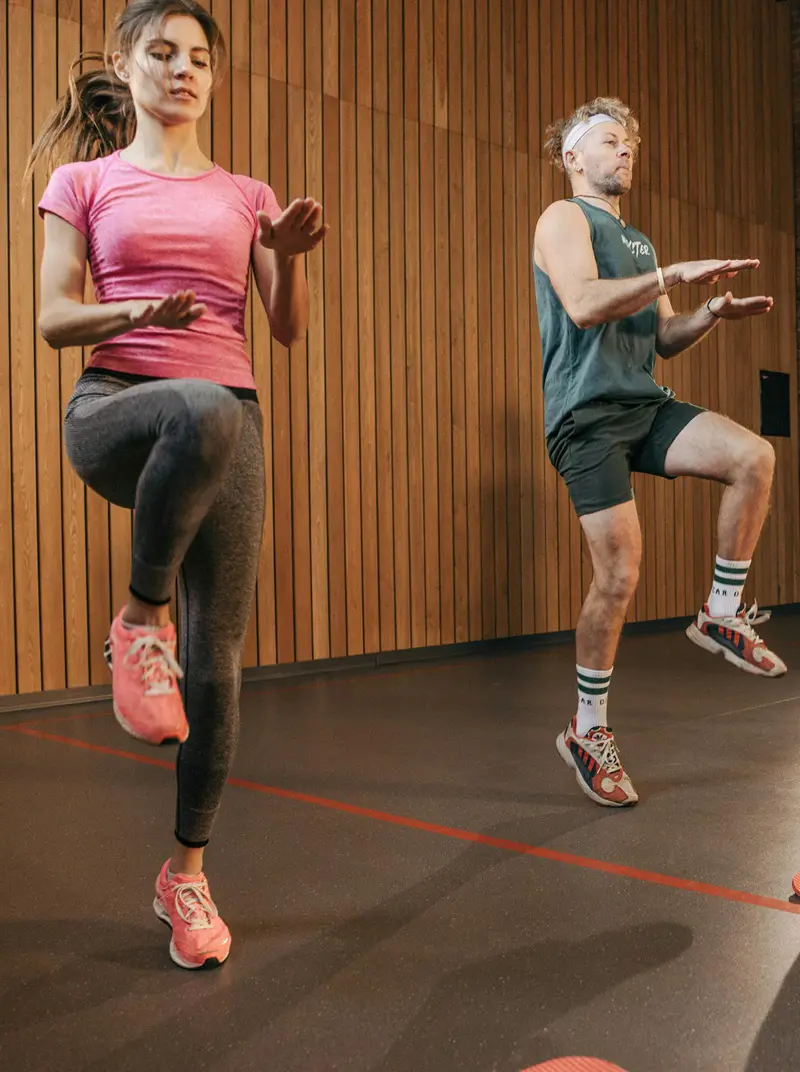
High knees are ideal when included in your stretching exercises especially before you go for a cardio or leg workout. This dynamic movement not only raises your heart rate in addition to the many other benefits, but it also incorporates your abdominal, hip, and lower body muscles.
They are great warm-up exercises that can enhance your cardiovascular fitness. High knees prepare the muscles before a workout session, reducing the risk of getting injured.
How to Do It:
- Start with your feet hip-width apart. Your arms should be by your sides and your hands relaxed.
- Jog in place, and move your knees as much up as possible toward your chest.
- As you lift each knee, engage your core and pump your arms in rhythm with your legs.
- Perform this movement for 30-60 seconds at a fast rate and with a high lift.
5. Torso Twists
The movements that are involved in the twisting of the torso can be quite helpful in increasing the flexibility of torso muscles, especially the oblique and lower back muscles.
Performing pre-workout stretches that include the torso twist is particularly beneficial for your pre-workouts since it warms your muscles and develops your abs.
How to Do It:
- Stand with your feet at shoulder-width distance and keep your knees slightly bent.
- Place your hands on your hips or extend your arms out in front of you.
- Bend your upper body to the side using your lower back muscles and twist your shoulders to the left. Your hips must remain in a straight direction to the front.
- Move back to the center, then twist your torso to the right.
- Get back to twisting each side for 15-20 twists.
- Make sure that your movements are slow and you use your abs muscles to rotate your body.
6. Butt Kicks
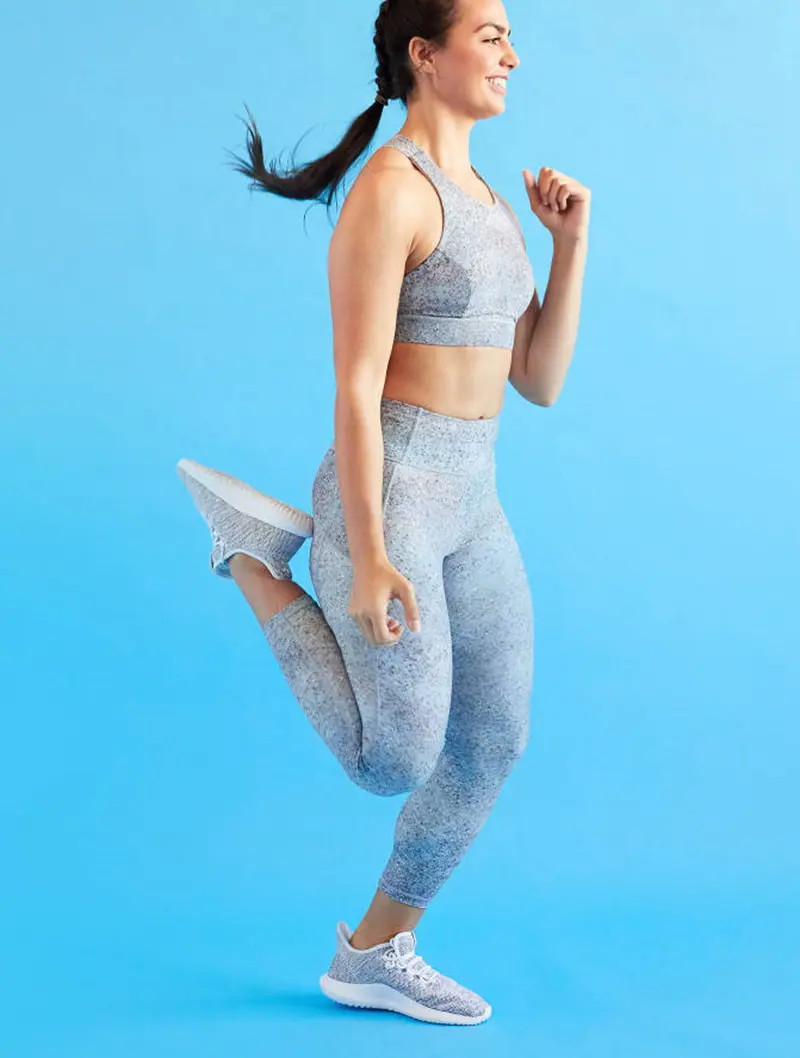
Butt kicks benefits your hamstrings and also enhances your blood circulation and cardiovascular health. Adding butt kicks to the stretches you do before exercising increases your lower body flexibility. They get your muscles ready for upper-intensity movements more than any other form of warm-up.
How to Do It:
- Place your feet hip-width apart and stand with arms loose by your side.
- Start jumping with your feet as if you are jogging on the site while raising your heels towards your buttocks.
- Keep moving for 30-60 seconds with special emphasis on the lifting of heels.
- Maintain a swift tempo to avoid exerting lots of pressure on the joints.
Post-Workout Stretching Routine
When you are through with your workout session, it’s important to cool off and help your muscles relax by doing some post workout stretches.
By practicing stretches post workout, you’ll help your muscles to recover as well as minimize soreness. This will enhance your flexibility in the process which ultimately helps when you are involved in your next workout sessions.
1. Standing Quad Stretch
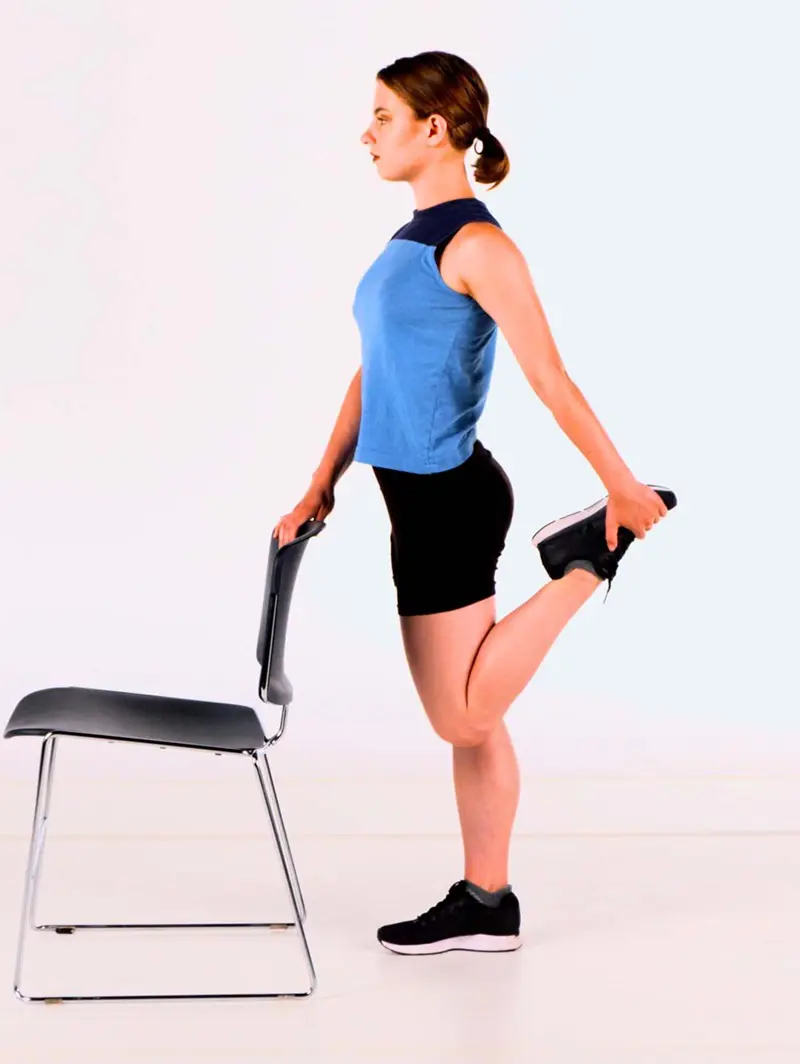
Standing Quad Stretch focuses on a specific muscle known as the quadriceps which is located at the front part of the thighs. This specific workout is effective in the management of muscle tension and also promotes better flexibility.
Thus, doing the standing quad stretches after workout can aid in reducing muscle stiffness in the leg.
How to Do It:
- Stand upright and find your balance on your left leg.
- Now raise your right leg and flex your right knee bringing your heel towards your buttocks.
- With your right hand, slide down and grab your right ankle.
- Hold the position for 20-30 seconds.
- Bring it down, switch to the other leg, and repeat.
2. Hamstring Stretch
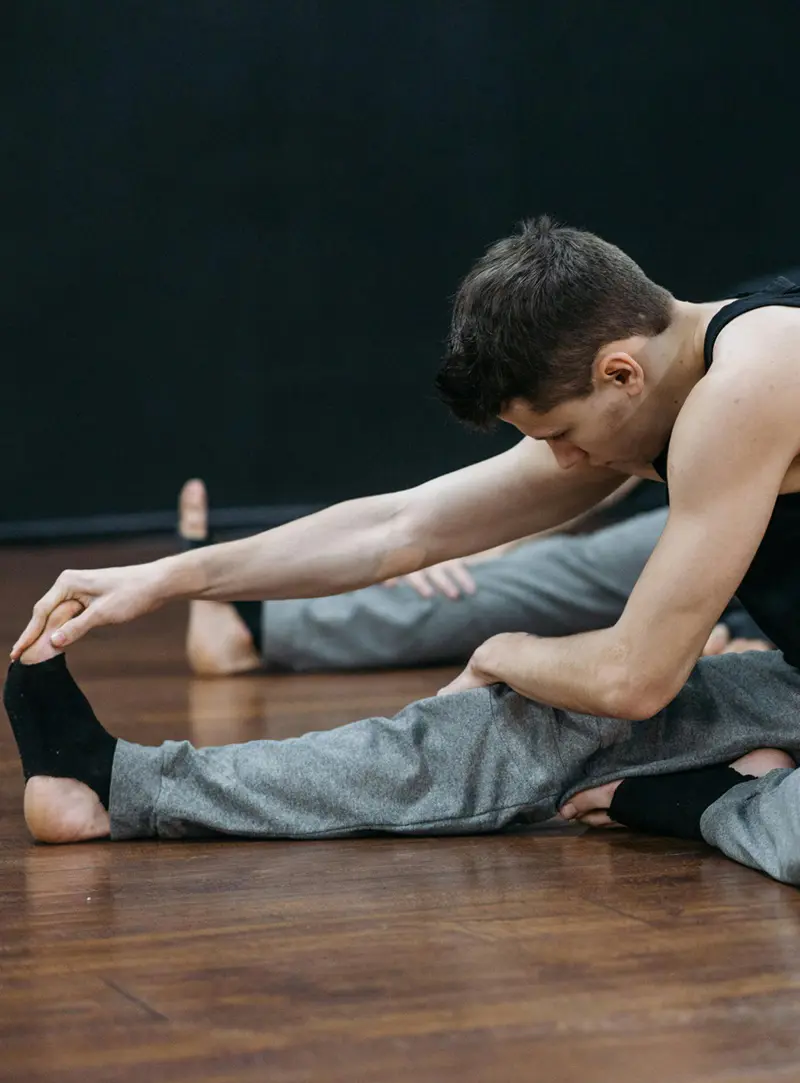
This workout is self-explanatory since it engages the muscles on your thigh’s back to reduce tension and rigidity of muscles. If the hamstring stretch is performed every time after a session, then the possibility of getting hamstring injuries becomes low.
How to Do It:
- Sit down on the ground with your legs extended straight in front of you.
- Keeping your back straight, slowly reach forward toward your toes.
- Maintain this stretch for approximately 20-30 seconds and you should feel a mild stretch across the back of your legs.
- If it is not possible to reach the toes, then only extend to a comfortable distance.
3. Child’s Pose
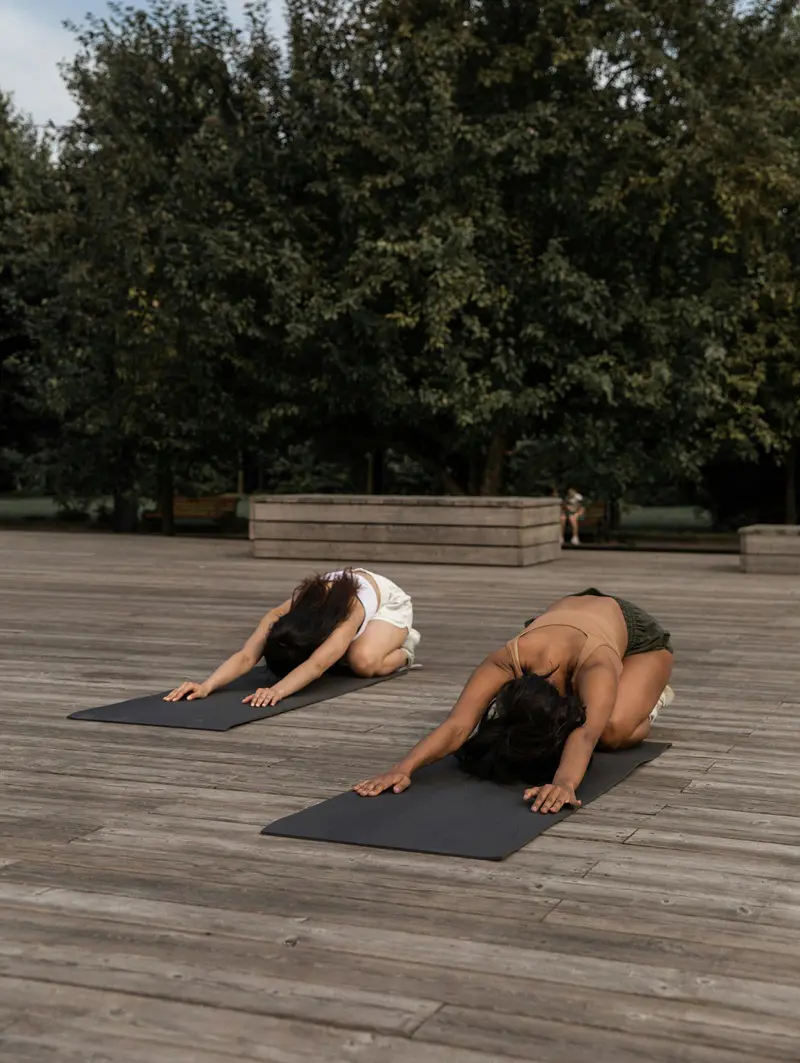
Sometimes called ‘sleeping swan’, the child’s pose targets your back, shoulder, and neck. By doing this stretch, you can minimize tightness and increase flexibility of the spine and hip area while relieving muscular tension.
Besides, when you have incorporated Child’s pose into your post-workout practice, your body is better positioned for subsequent workouts.
How to Do It:
- Stand on your knees, keep your knees wide apart, then sit down on your heels.
- Bring both arms forward on the floor.
- Leaning on your head and feet, lay your forehead on the floor, and take gradual breaths.
- Stretch for 20-30 seconds with emphasis on getting a deeper stretch.
- Slowly return to the starting position.
4. Butterfly Stretch
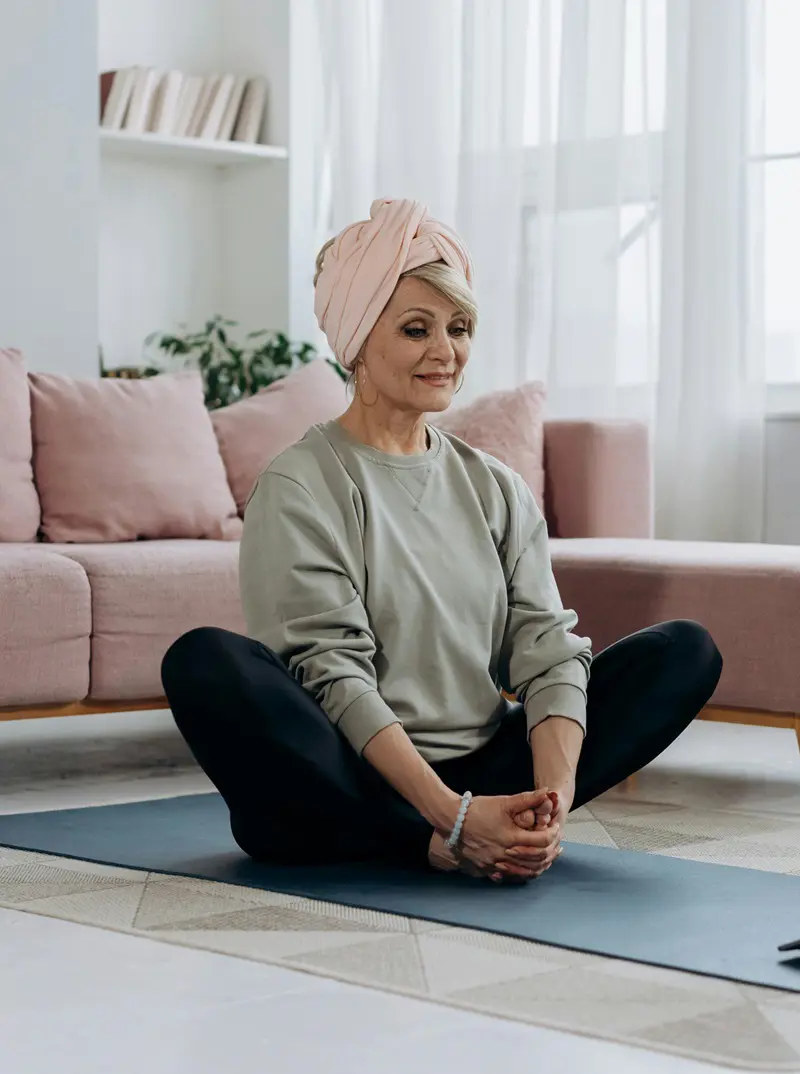
If you include this stretch in your daily fitness regimen, it will engage your inner thighs and hips. Not only does it help in restoring muscle tissue, but it also improves your flexibility.
How to Do It:
- Sit on the floor with the soles of your feet pressed together and your knees bent outward.
- Place your hands on your feet and bring your knees close to the floor while holding your feet.
- If you want, lean forward a little so that you feel the stretch in the inner thigh muscles.
- The stretch should be held for 20-30 seconds.
- Gradually return to the initial position. This is 1 rep.
5. Seated Forward Fold
Seated forward fold is essential after a workout to decrease tension and tightness of the lower back muscles and hamstrings. Including this stretch into your list of exercises contributes to flexibility, lessens muscle stiffness, and promotes faster recovery.
Not only does this stretch help to relax sore muscles, but it also warms up the muscles, thereby providing a more comfortable and more efficient training session.
How to Do It:
- Begin this exercise while seated on the floor with your legs parallel to one another, and your back straight.
- Gradually move your hands towards your toes while having your spine extended.
- You need to go as far as possible to get a good stretch in the lower back through the hamstrings.
- Maintain the position for 20-30 seconds while focusing on the breath.
- Gradually come back to the original position and repeat as many times as desired.
6. Cobra Stretch

The Cobra stretch is a good exercise that should be performed after workout sessions to strengthen your chest, abdominal muscles as well as lower back. As with other stretches, this one aids in reducing tension, increasing spinal mobility, and enhancing muscle recovery.
It can be performed after conducting aerobic exercises to decrease the general stiffness of the muscles.
How to Do It:
- Lay on your stomach on the floor, stretching your legs backward, and placing your hands under your shoulders.
- Push your chest off the ground with the help of your arms.
- Keep your elbows slightly bent and your shoulders relaxed.
- There is no need to tense any other area of the upper body. Hold the stretch like this for about 20 to 30 seconds.
- Slowly lower your chest back to the floor and repeat as needed.
Importance of Stretching
1. Improves Flexibility and Range of Motion
Stretches pre workout and after a workout make it easier for you to move because it ensures the flexibility of your muscles and joints. Good flexibility enables the body to move easily and naturally.
In the long run, you can maintain and even enhance this flexibility to make it easier to carry out intensive exercises.
2. Reduces the Risk of Injury
In any form of workout, the body has to warm up first as a way of preparing it for the stress. Stretching makes muscles pliable through the extension of blood flow all over muscles as it prepares them to do movements.
This reduces the chances of moderate injuries such as muscle pulls or twists. When the muscles are conditioned, they will be in a position to accommodate shock or sudden changes like a twist that comes with certain exercises.
3. Enhances Posture
When you spend considerable time at a desk or glued to a computer or handheld device, the body becomes very stiff. Stretching before workout helps in elongating these contracted muscles, especially the muscles around the chest, shoulder, and lower back.
4. Aids in Post-Workout Recovery
Muscles usually get tired and weak most of the time after doing some exercise and one may feel a stiff and sore feeling in the muscles. Stretching at this point helps to relax your muscles, reducing soreness by promoting better blood circulation.
This circulation helps deliver nutrients to your muscles for their recovery. Likewise, stretching also rebalances the muscle fibers that are aligned irregularly during periods of exertion, which promotes a quicker return to normalcy.
5. Reduces Stress and Promotes Relaxation
Stretch exercise after workout can also support your mental health. Likewise, taking a break to stretch yourself enables you to focus on breathing and relaxation. It can reduce stress and tension that have developed and accumulated in your muscles all day.
By taking some time to do stretching, you can design an opportunity to clear your mind and feel more centered and relaxed.
Recent posts
How To
How To
A Proper Guide On How To Do The Splits For Beginners
Learning how to do the splits is the ultimate goal for every gymnast and fitness enthusiast. Spreading the legs to a 180-degree angle is a true testament to athletic power and flexibility. As a beginner, it might feel intimidating at first, but with ...
How To
A Guide On How To Measure Your Waist Correctly
Measuring an individual’s waist is crucial for assessing internal fat deposits that surround the heart. It can indicate a person’s current health status, with a larger waistline suggesting a higher risk of heart disease and stroke. Along ...
How To
Hip Dips: What Are They And How To Get Rid Of?
Hip dips are slight indentations on the outer hips, appearing as small inward curves when viewed from the front. They are usually due to the protrusion in the pelvic structure and are largely determined by genetics. Many women aim for a more rounded ...
How To
How To Calculate Calorie Deficit For Weight Reduction
The term "calorie deficit" refers to burning more calories than we consume. It's a popular approach for losing weight and staying in shape. Achieving a calorie deficit could be tricky, as it requires consistent tracking, healthy habits, and accurate ...
How To
How To Get Veiny Arms And Increase Your Vascularity
Getting veiny arms require proper workout plans, a balanced diet, and consistent hydration. All of them play a vital role in enhancing our vascularity by improving muscle tone, enhancing circulation, and reducing body fat. We can also achieve veiny a...
How To
How To Increase VO2 Max For Better Physical Fitness
VO2 max is a crucial indication of cardiovascular health, which measures how well your body utilizes oxygen during exercise. Improving it enhances energy levels, increases endurance, and strengthens athletic performance. A higher VO2 max requires con...
